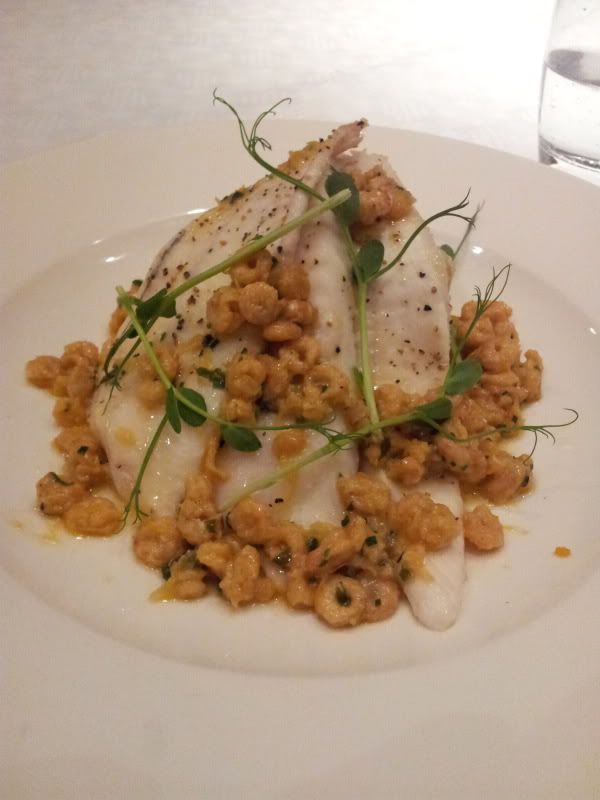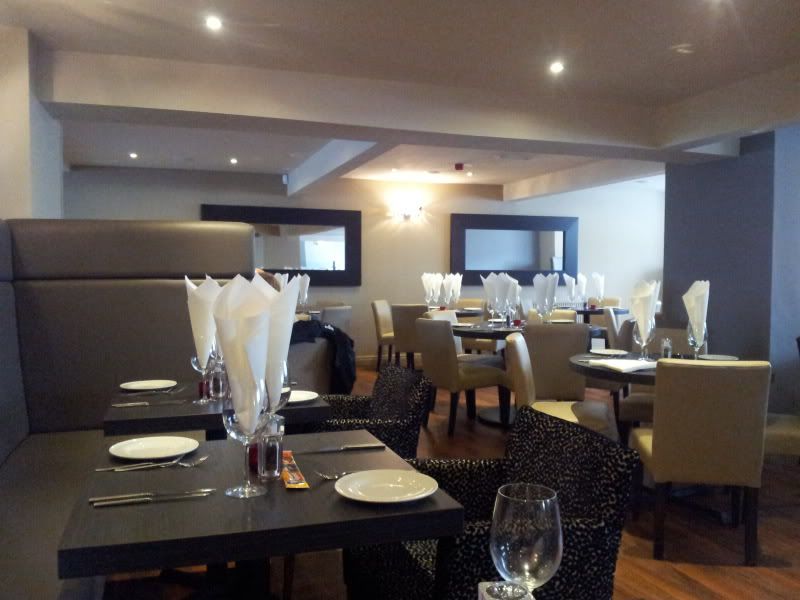11th May 2013
Parkers Arms
Newton-in-Bowland
I've been a fan of Chateau Musar, the best known of the several wine producers in Lebanon, for many years now, and I've been a fan of the Parkers Arms almost since the current team headed by Stosie Madi in the kitchen took over a few years ago. Stosie has some Lebanese ancestry, and I've always kept an eye out for anything middle-eastern on the menu (the lamb kofte with home-made pitta breads, for example, are always a joy).
So it was a privilege, through the medium of Twitter, to introduce Stosie and Ralph Hochar of Chateau Musar UK, and let them get on with coming up with a plan.
This evening was the result of that planning. Stosie created what read like a traditional Lebanese menu, but was strongly influenced by the wonderful ingredients that Lancashire can offer, her own style of cooking and a pinch of understanding of what her customers would eat. The wines were chosen by Ralph Hochar and sourced through D Byrne & Co of Clitheroe.
For more background on Chateau Musar and some tasting notes on some remarkable old vintages, see my post here.
(I should add the disclaimer that as a result of the introduction of Stosie Madi and Ralph Hochar, and the encouragement I gave to the development of this evening, I was given a discount for the evening. My comments are, however, not influenced by the not-at-all-a-freebie, and my attempts to find different superlatives all reflect the quality of the cooking.)
We started in the bar with copious quantities of Musar Jeune Rosé 2011 and platters of mezze circulating.
Unfortunately balancing glass and camera, together with half-eaten platters doesn't make for particularly appealing photographs.
Falafels, made with garden peas as well as chickpeas, were light and tasty, and came with a lovely smooth hummus.
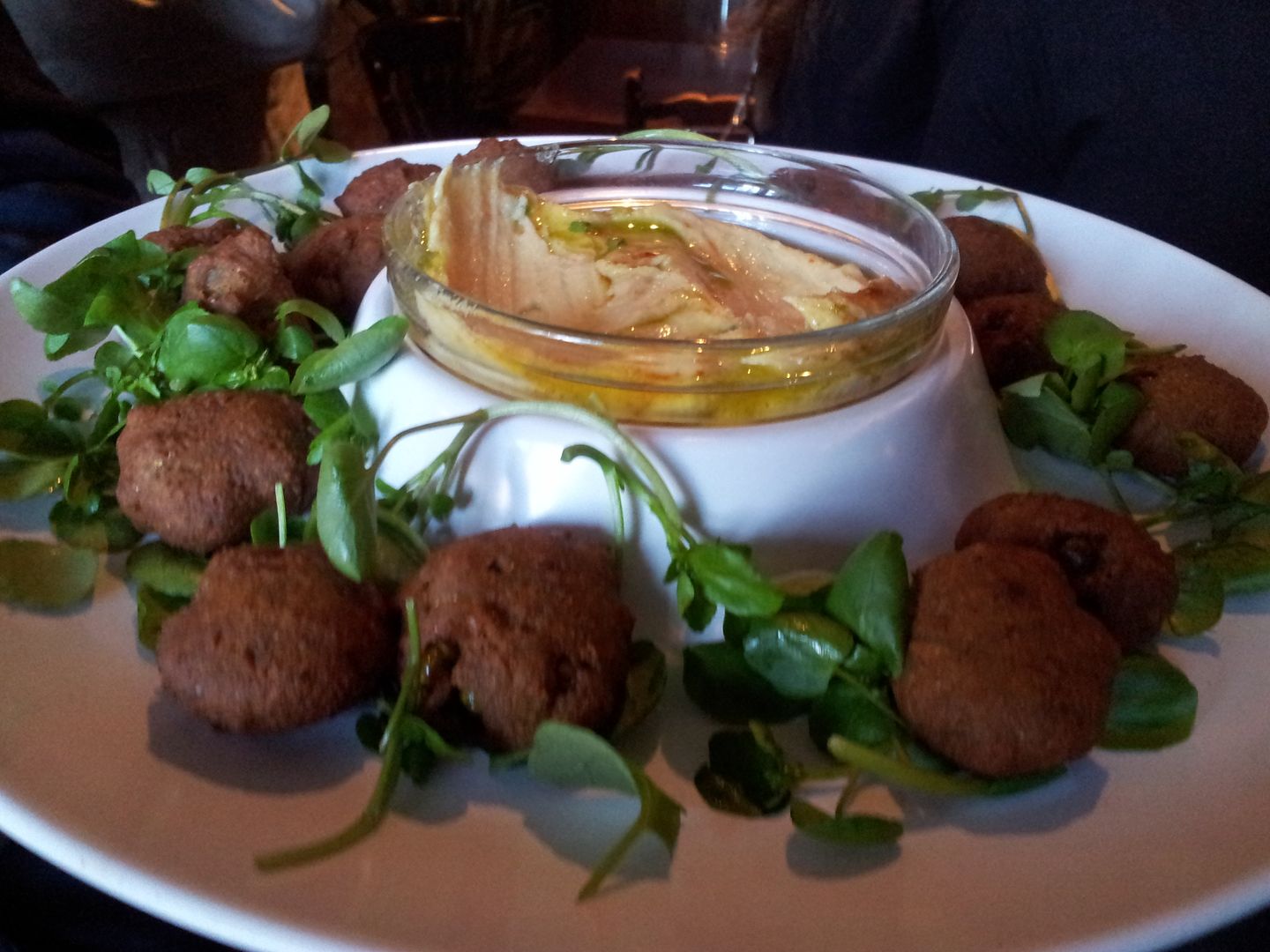 |
| Falafels |
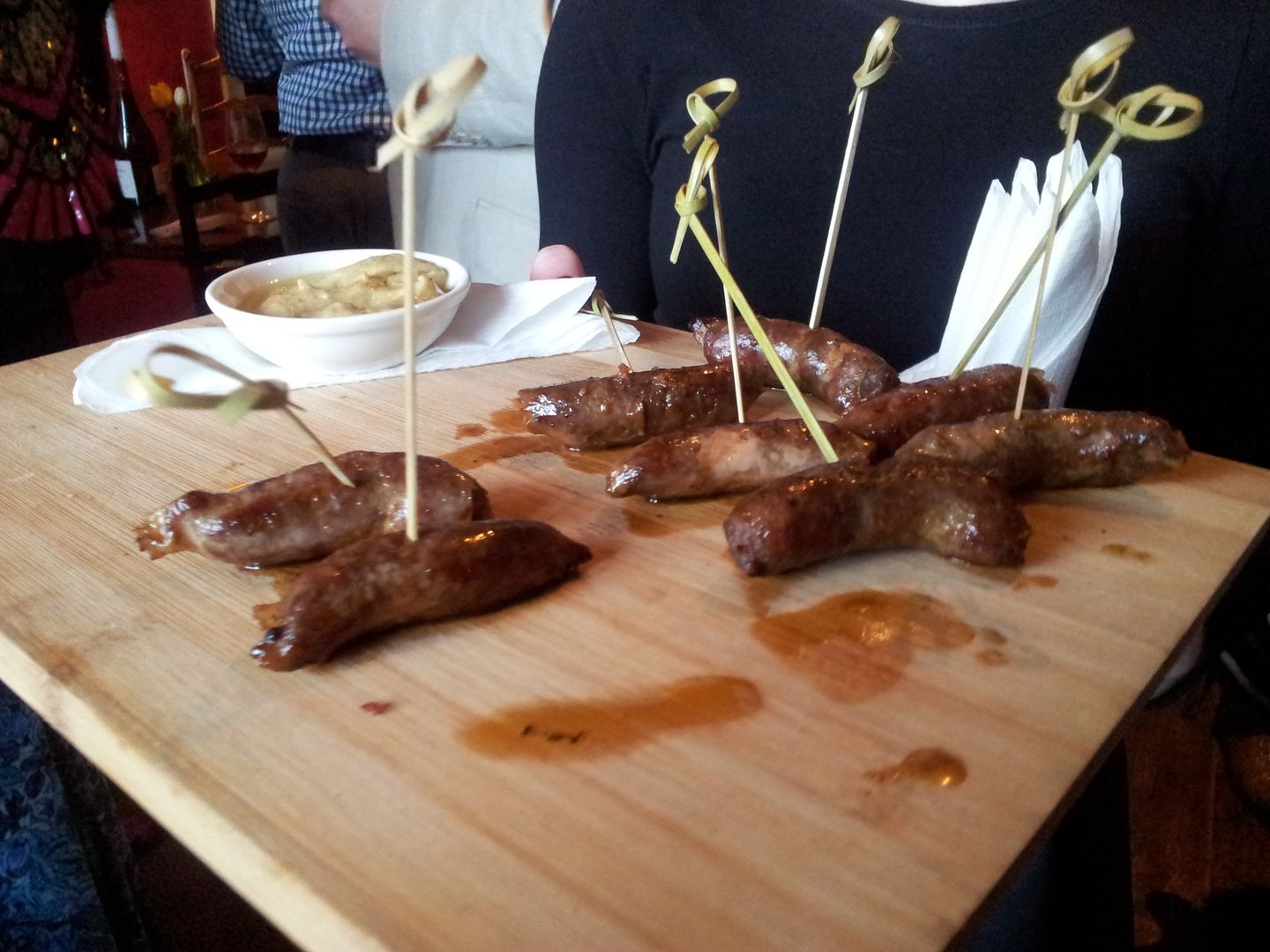 |
| Makanek sausages |
 |
| Fatayer |
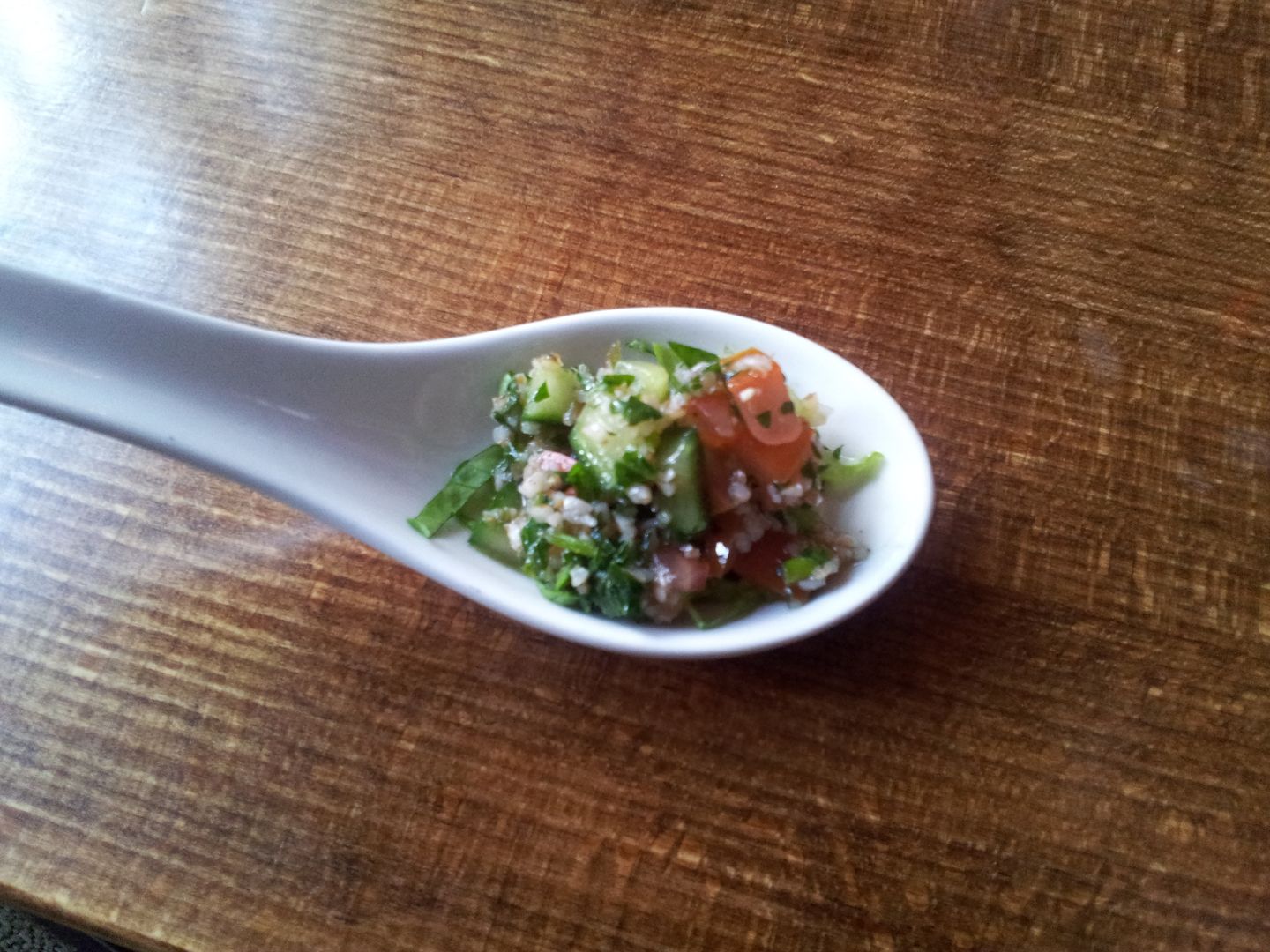 |
| Tabouleh |
 |
| Flatbreads and yoghurt dip |
Chateau Musar, Musar Jeune Rosé, 2011
This has a bright attractive pink colour. There are strawberries & pomegranate on nose with a hint of minerality. Nice soft on the palate, this has gentle sweetish red fruit with a nice pleasant character. Very clean finish. This is a good rosé with a nice, interesting character. 88/100
After moving through to the dining room, there was more Khobez flatbread, now with a powerful za'atar herb oil for dipping, which was rapidly mopped up by our table.
 |
| Ralph Hochar briefly introduced the wines |
 |
| Chorba Mloukiyeh without the broth ... |
 |
| ... and with the broth |
The Chorba Mloukiyeh was served with
Chateau Musar, Musar Jeune Rouge 2010
A big blackberry-laden nose. There's powerful black fruit on the palate. Ultimately, it's a fairly simple wine, but gains some complexity from the drying tannins on the finish. 87/100
Kibbey Nayeh was probably the dish that had been most adapted to the Lancastrian palate, as rather than being made with pulverised raw lamb, this was a hand-chopped venison tartare. There was a superficial resemblance to Simon Rogan's venison tartare dish, but really it was only superficial. The Parkers Arms version had a superb, delicate middle-eastern spicing, counterpointed by the dots of pomegranate molasses, and the cracked wheat crisps added more of a crunch than Rogan's version has.
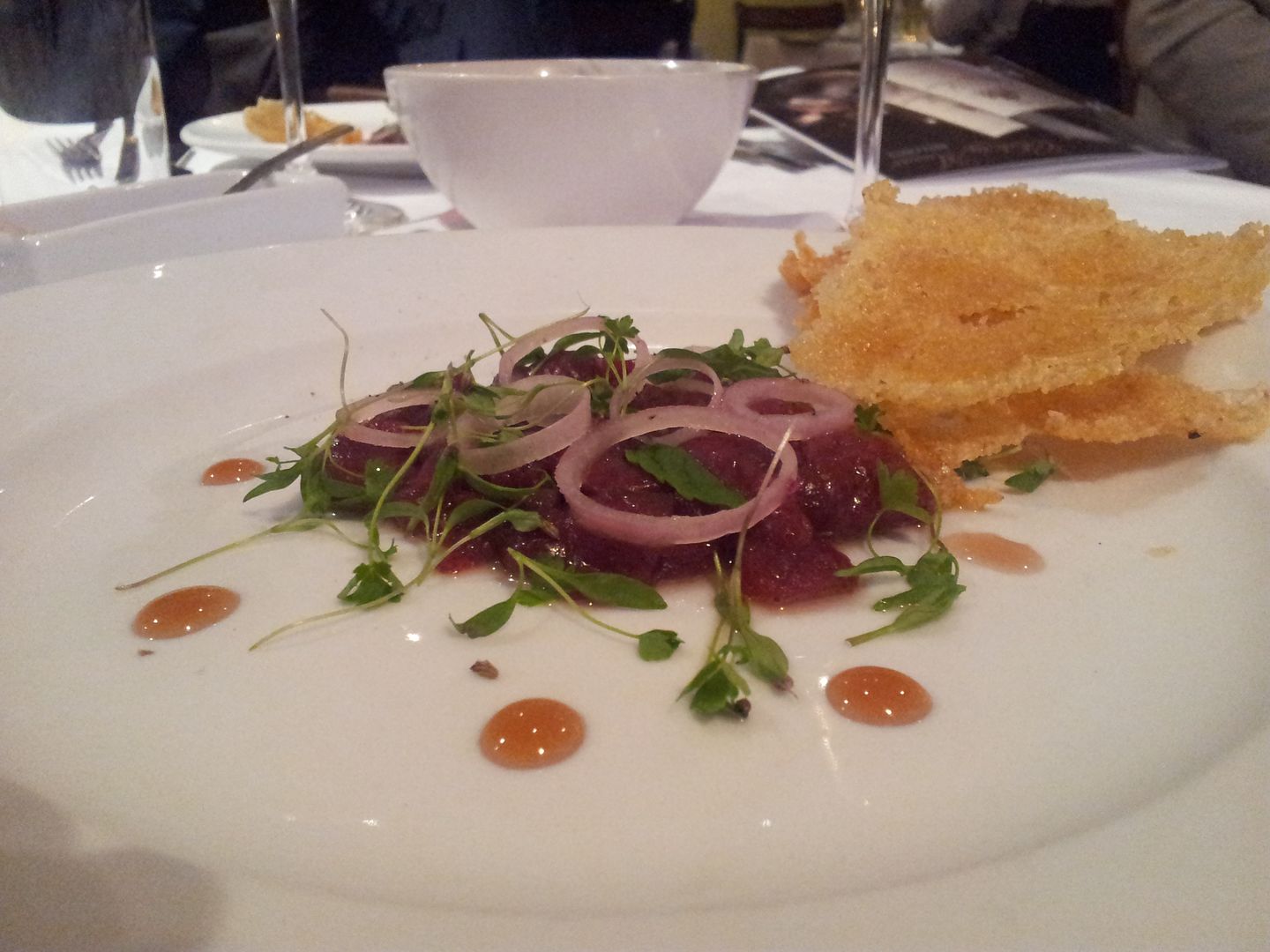 |
| Kibbey Nayeh |
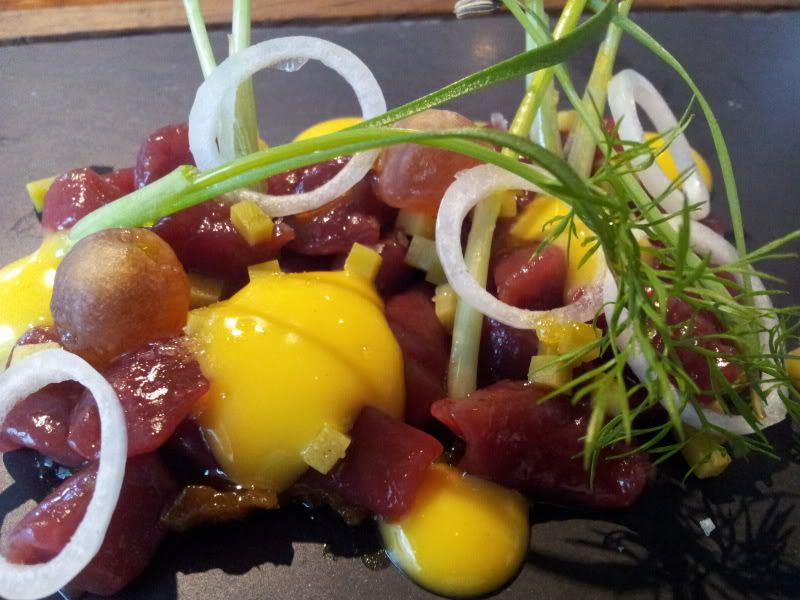 |
| Just for fun, here's Simon Rogan's venison tartare from a meal at L'Enclume in May 2013 |
The Chateau Musar, Hochar Père et Fils 2007 was served with the venison:
The Hochar Père et Fils is made only in a red version. It isn't a second wine of Musar as such, but rather is sourced from a single vineyard planted over 50 years ago near the village of Aana in the Bekaa Valley. The wine has a lovely, integrated nose with red and black fruits, and more than a touch of cough medicine. Really good palate: it feels very integrated with some nice spicy notes. Great length. 90/100
Our next course was eagerly anticipated by me, as I'd had the accompanying rice with fish at the Parkers Arms before: Siyadiyeh - roast, spiced hake served with a caramelised onion pilaf and a buttery lemon sauce. Nicely cooked fish (not always that easy when you're doing a banqueting style service), with the rice living up to expectations, and the sauce utterly delicious.
 |
| Siyadiyeh |
Chateau Musar White 2005
This has a mushroomy, nutty nose with hints of lanolin ... and lots lots more. Fascinating palate, almost defying description. It has a rich, velvety texture. "Multi-layered" hardly suffices to describe its complexity. Really fascinating, gorgeous stuff. Lots of umami. Remarkable. 93/100.
Lahem Meshwi came next: charcoal-grilled marinated lamb from the Cockerham salt marshes, served with aubergine confit and purée, grilled onion, confit garlic and a lemony lamb jus dressing. Beautiful lamb, terrific flavours.
 |
| Lahem Meshwi |
Chateau Musar Red 2005
The nose has some subtly perfumed red fruits with sous-bois notes, but also some horse sweat notes. There is huge depth immediately on the palate. Musar usually only starts to show it's best after some years, but for such a young Musar, this has a really remarkably classy feeling. It's very poised, elegant and rather feminine. There's a good tannic structure to give some backbone, but the tannins are not at all aggressive. Is there such a thing as an early drinking Musar? This could be it. 93/100
We then moved on to some generous pours of Musar's Arack. Chateau Musar L'Arack de Musar
A very good clean arack. Not much more you can say. Although we all try it neat, it's not something to drink neat: Ralph Hochar recommends one part arack to two parts water.
Arack (the aniseed spirit made and drunk across the Middle East, Turkey and Greece) would not have come immediately to mind as something to drink with a fresh curd cheese, but I thought it actually worked pretty well with the next dish.
Gibneh Beida was Stosie's home-made soft, fresh curd cheese made with milk from Gisburn, rolled in a pistachio crust and served with a pistachio tuile, a bright, clear, rosehip jelly and an unctuous Amar el Din (i.e. apricot) sorbet.
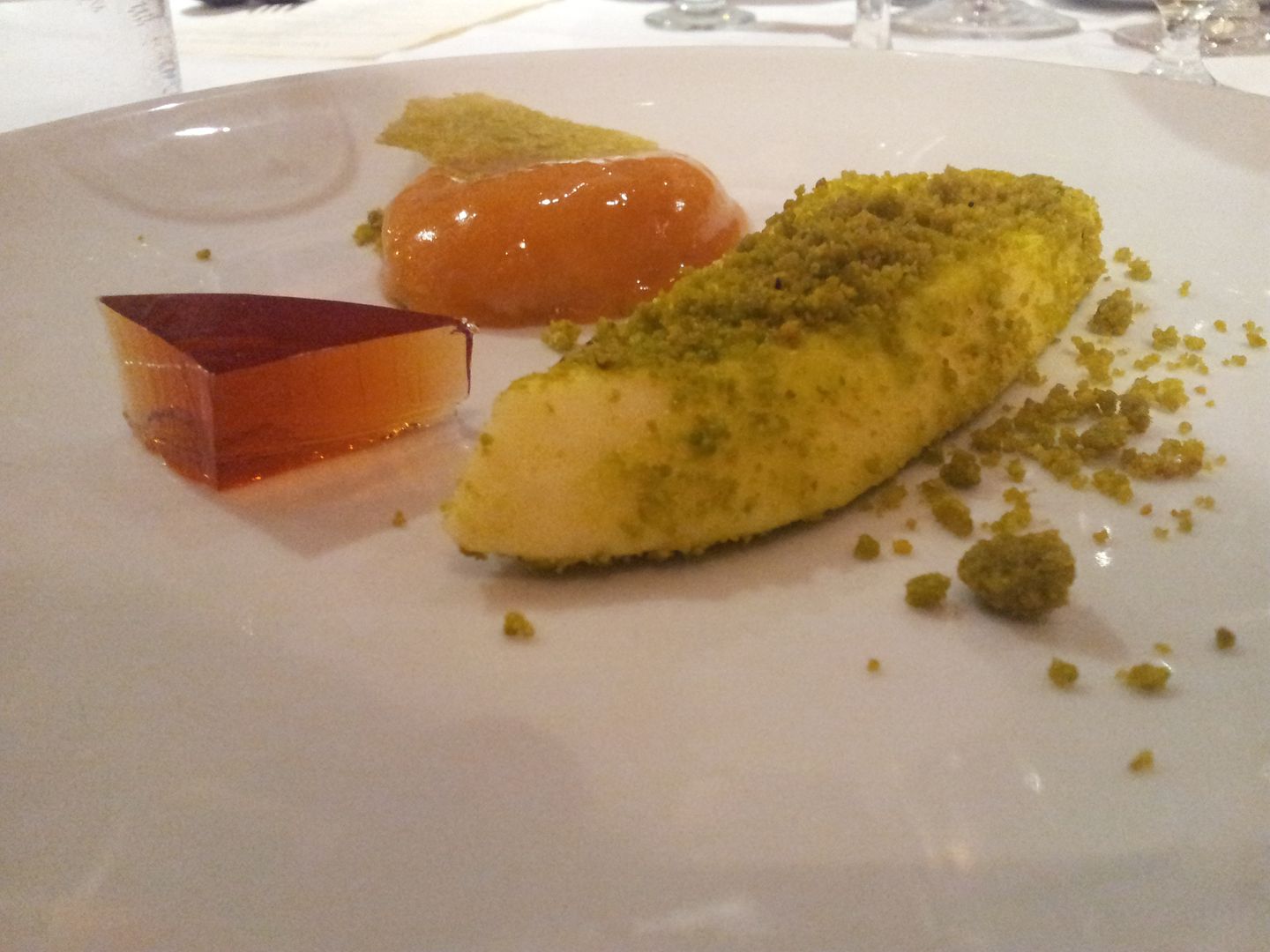 |
| Gibneh Beida |
I hope it will be possible for the Parkers Arms and Chateau Musar to repeat this event next year, maybe, and also that it might mark the start of more wine evenings, allowing Stosie Madi to express further aspects of her heritage. Hmmm ... could lamproies à la Bordelaise be one step too far for the Ribble Valley?











